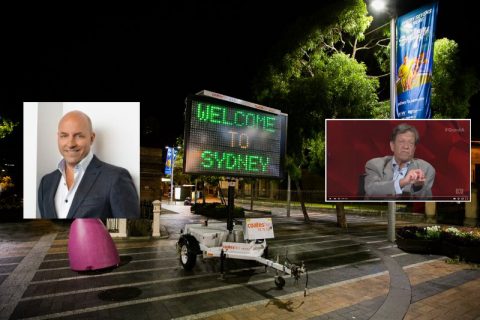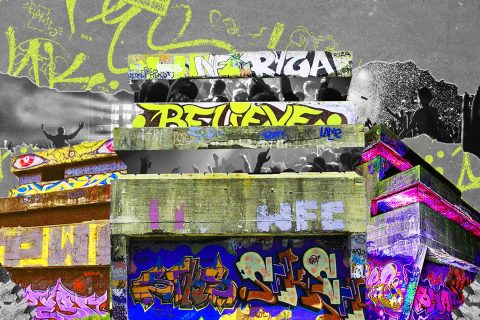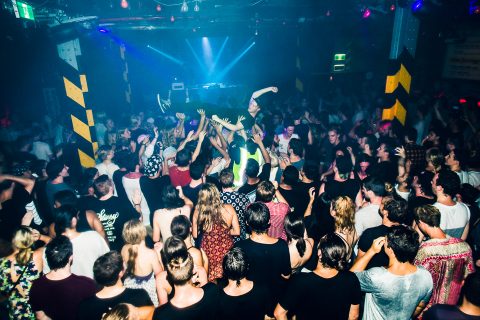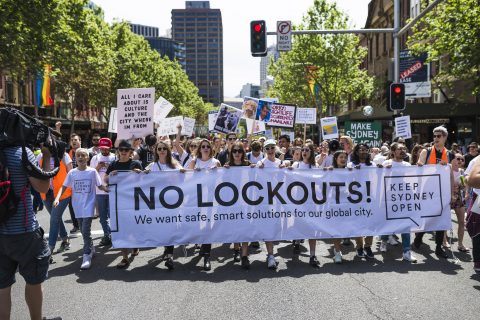Matt Barrie – the man behind the widely read article slamming the lockout laws – is back at it again, with a lengthy write up giving the Mike Baird Government a verbal chin-check.
In this most recent article, Barrie focuses on the misuse of official statistics. Barrie then goes on to highlight multiple examples of where statistics have been subject to misuse to in order, and then proceeds to leave the misusers utterly butthurt, without a leg to stand on.
You cannot escape Matt Barrie!
Without going to deep into it all (as there is a lot of article to summarise) we have included a key argument below. Alternatively, you can read the full article here.
“Misuse of Fulde, Smith & Forster (2015) paper on St Vincent’s identifying critically or seriously injured emergency presentations related to alcohol use.
The paper written by Fulde et al. (2015) is cited by pro-lockout proponents as the key evidence supporting the lockout laws. This paper counted trauma cases classified as Australasian triage categories 1 (immediately life-threatening) and 2 (imminently life-threatening, important time-critical treatment, very severe pain) in the 12 months before (24 February 2013 – 23 February 2014; period 1) and the 12 months after (24 February 2014 – 23 February 2015; period 2) the 2014 changes to liquor licensing regulations applied to the precinct.
The key conclusion often quoted from this paper is that there was a relative reduction of 24.8% (P 0.05) in category 1 and 2 injuries during High Alcohol Time (HAT), and that there was a small increase in the number of patients presenting with alcohol-related injuries between 9pm and midnight after the lockouts were introduced.
Dr Fulde describes his department before the lockout laws as a “war zone” and the decrease in severe head injuries since then as “spectacular and terrific”.
I wish to bring to your attention a number of substantial issues with this paper.
Firstly, It is important to note that the paper presents statistics onalcohol-related injuries, not alcohol-caused injuries.
Quoting directly from the paper, there were 13,110 triage category 1 and 2 presentations to the St Vincent’s Hospital emergency department: 6,467 during period 1 (before the lockouts) and 6,643 during period 2 (after the lockouts). Overall there were more presentations to St. Vincent’s after the lockouts.

Figure: Basic arithmetic error in key results summary of Fulde et al’s (2015) paper. Regardless, only 4.3% of category 1 & 2 admissions are alcohol-related.
Of these, the paper says only 1,564 were patients who presented with alcohol-related serious injuries. Right off the bat, to show you how sloppily this paper has been put together and reviewed, this is a basic arithmetic error- the actual number is 564 (4.3%). You can verify this yourself by adding the 318patients during period 1 to 246 during period 2 which yields 564.
The paper then looks at High Alcohol Time, which is the weekend, to reach the 24.8% reduction in injuries conclusion. I have included a screenshot by way of reference:

Figure: The conclusion of the Fulde et al. (2015) paper.
A 24.8% drop in injuries at St. Vincent’s is determined
by a total delta of 34 patients over one year.
The 24.8% drop in injuries at St. Vincent’s is determined by Fulde by a total difference of 34 patients over an entire year during the High Alcohol Time.
Of course, any injury is a tragedy, but putting this into perspective, an Australian dies every three days in Thailand, yet I do not see any travel restrictions being put in place from visiting that country. You are far more likely to die falling over, out of bed or off a ladder than anywhere near a licensed venue or entertainment precinct in Sydney.
What is the High Alcohol Time? Fulde et al. curiously took this to be from 6pm Friday to 6am Sunday. When one considers the actual hours affected by the lockout (1am – 4am, as some venues reopen at 5am), the total difference is approximately 25 patients over an entire year. There were more alcohol-related injuries at 6pm, 7pm, 9pm, 11pm and midnight after the lockouts.
These 25 patients are not exclusively victims of alcohol-caused assault, or even assault for that matter- this is across all causes of injury. To quote, these cases were “critically or seriously injured emergency presentations that were identified as related to alcohol use”. Alcohol is not necessarily the direct cause in these cases– a victim could have a drink and be hurt in a method completely unrelated to alcohol consumption.
Nor do they exclusively emanate from licensed venues, or even the entertainment precinct. So, a lady having a glass of champagne at dinner at home, who subsequently falls down a staircase after tripping on a cat would be included in these statistics.”





Comments